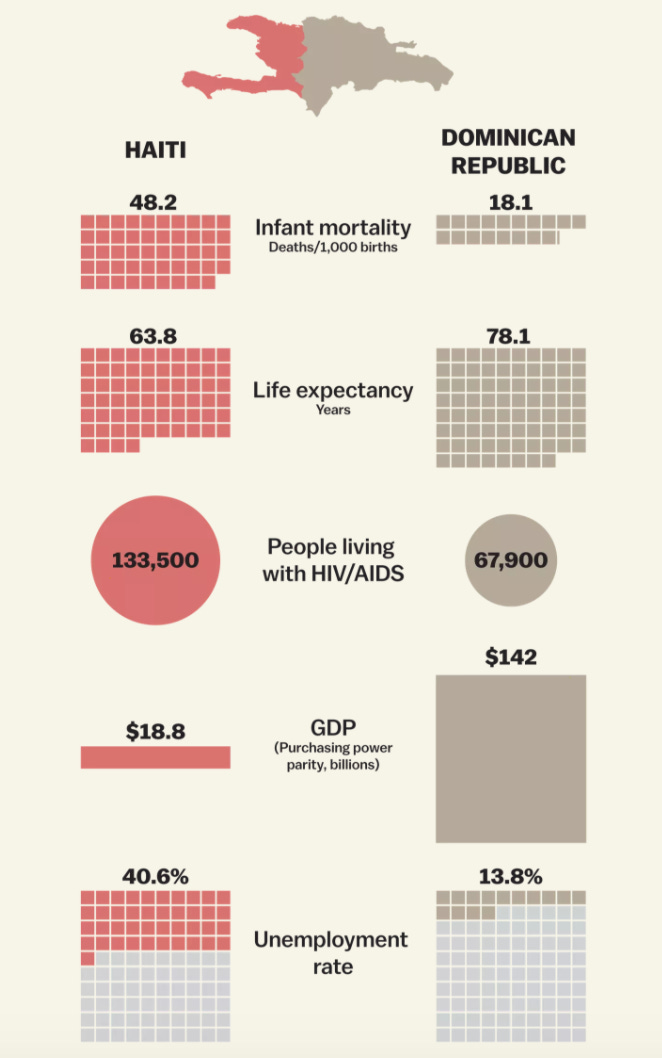🇭🇷🇩🇴Election Round Up: Croatia and the Dominican Republic
Hello! Another week, another couple of elections from around the world, this time in Croatia and the Dominican Republic. Two very different countries with very different histories, but one thing they have in common is the critical need to stem the spread of Covid-19. Croatia is in the midst of its second wave, while cases in the DR are still rising from its first. So we got into that and what’s next for each country aside from the pandemic. This week I’ll be getting back into the podcasting scene, with a scheduled episode with the legendary Cass Sunstein, author of Nudge and one of the foremost behavioural scientists that’s ever stepped foot on this planet, so stay tuned for that. Until then, enjoy some election coverage! 🤓

2020 Elections So Far
July: Mongolia, Iceland🇲🇳🇮🇸
June: Serbia, Kiribati and Malawi🇷🇸🇰🇮🇲🇼
April: South Korea🇰🇷
March: Israel, Slovakia and Tajikistan🇮🇱🇸🇰🇹🇯
February: Cameroon, Ireland, Azerbaijan🇨🇲🇮🇪🇦🇿 and Iran, Togo🇮🇷🇹🇬
Job Corner
Deadlines this week for jobs at CBC, CTV, the Pulitzer Center, The Texas Tribune, Vox Media and Yahoo News. Spread the word. 🤜🤛
🇭🇷 Croatia: Conservatives Welcome Unexpected Results
We’ll start this week in the Balkans as Croatia reelected the incumbent Croatian Democratic Union — also known as HDZ — according to preliminary results. In a shock result that few polls predicted prior to election day, the conservatives are on course to win 37.3 percent of the popular vote, which will translate into around 68 of the 151 parliamentary seats, just short of an absolute majority. On the opposite side was the Restart Coalition, led by the centre-left Social Democratic Party, which looks set to win 24.9 percent, or 43 seats.
Source: Politico, Index.hr
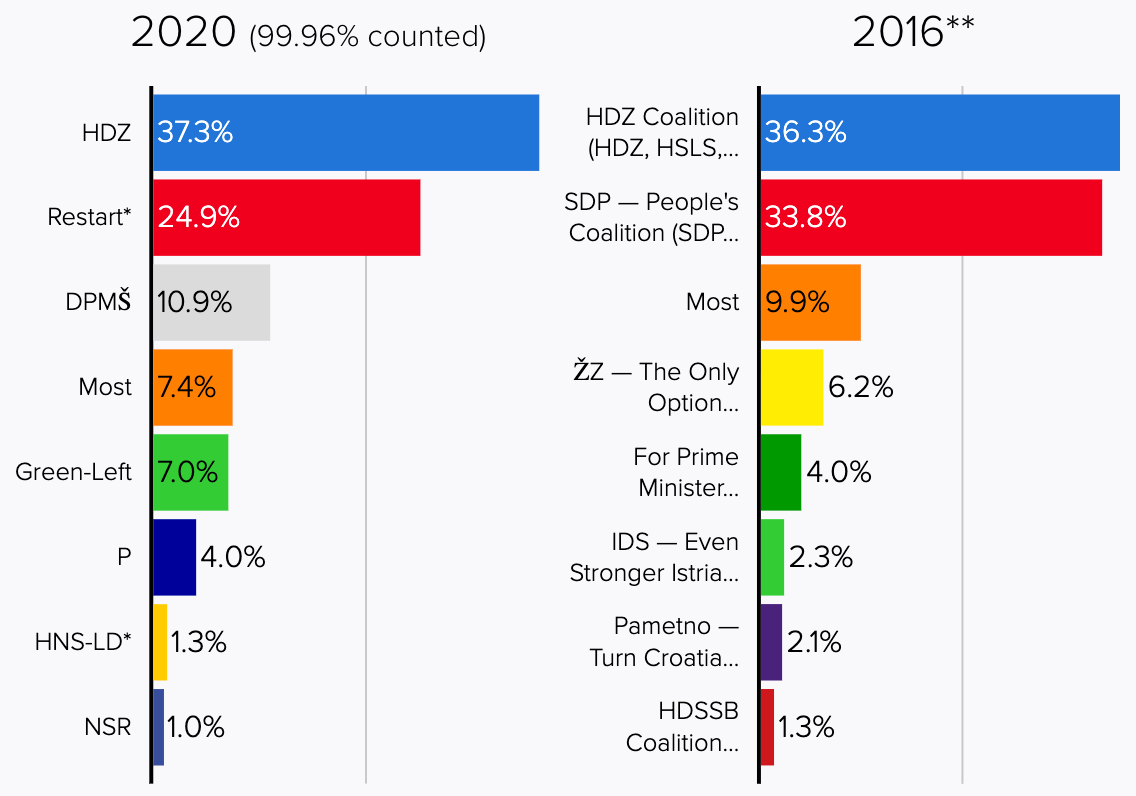
Amid the Covid-19 pandemic, which has seen the number of confirmed daily cases in Croatia spike to record levels, turnout was just 46 percent of the 3.8 million eligible voters, perhaps helping to explain why the conservatives are set to hold onto power for another term. Thirty-five women were elected into the new parliament, an increase of 84 percent up from just 19.
Source: Worldometers
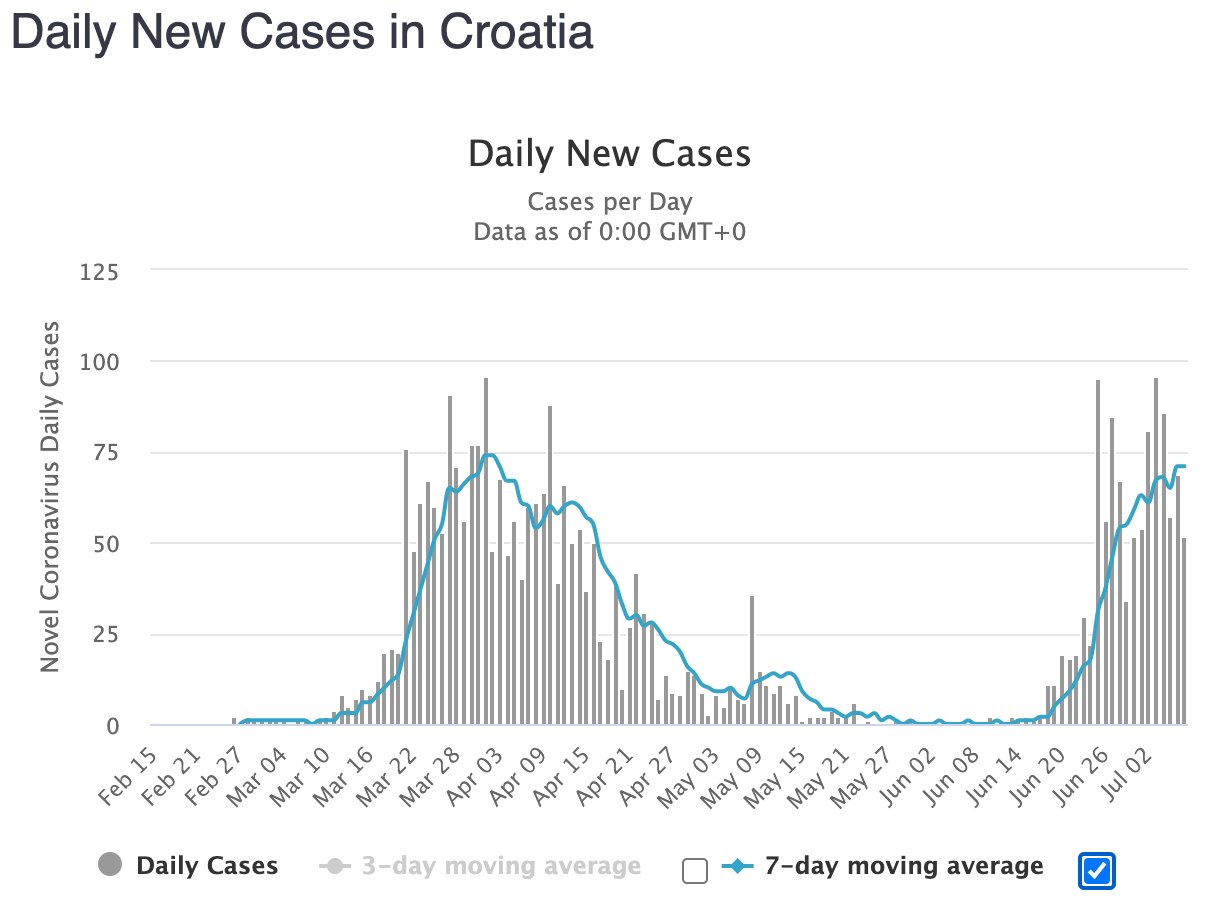
What Happens Next?
Prime minister Andrej Plenković must now form a coalition with smaller parties in order to take HDZ over the majority threshold. One of which could include the Homeland Movement, a new far-right group entering parliament for the first time, and led by folk singer Miroslav Škoro. Škoro finished third in last year’s presidential election with 24.5 percent of the vote, and missed out on the run-off by just 2.2 percent. Because the CDU beat expectations this past weekend and the number of seats it needs is in single digits, it’s thought that Plenković won’t need to rely on Škoro’s Homeland Movement.
Plenković’s most immediate challenge is to stem the rising Covid-19 cases and inevitable rise in deaths to follow in the coming days and weeks. As more and more countries reopen their borders, second waves are a stark reality. Being a popular tourist destination, Croatia is in a tough position of how to balance the worst pandemic in a century with an economy that could shrink by as much as 9.4 percent this year, and unemployment that rose by 14 percent between January and April.
Plenković must also resolve once and for all his country’s government’s obsession with corruption — Croatia currently ranks 63rd from 198 countries in Transparency International’s Corruption Perceptions Index — which has plagued the country for years. In 2016, the Croatian parliament was dissolved after it was revealed that the wife of former Deputy Prime Minister Tomislav Karamarko, Ana Saric Karamarko, received a €60,000 ($68,000) consulting fee from a lobbyist working for Hungarian oil company MOL. And most recently, former President Kolinda Grabar-Kitarović said in January that the country’s problem with fraud starts with children cheating on tests in school. No really, she actually said that…
“This is where corruption starts, on the children,” Grabar-Kitarović said. “They look for ways how to get around the system – and it is not contained to politics. It is much better than it used to be. But it is not just politics.”
🇩🇴 Dominican Republic: New President, New Me
Meanwhile in the Caribbean, the Dominican Republic elected a new president in the form of Luis Abinader of the Modern Revolutionary Party (PRM), according to initial results. According to 60 percent of results already counted, Abinader secured 53 percent, and will need to remain above the 50 percent threshold in order to avoid a run-off on July 26. Sunday’s results will likely bring an end to 16 years in power for the centre-left Dominican Liberation Party (PLD). In a surprising yet pleasant statement, outgoing President Danilo Medina said that democracy in the country had emerged stronger. Like most, if not all, elections held this year, voters had the pandemic fresh in their minds, and the country’s soaring confirmed daily cases surely had a large impact on the PRM gaining power.
Source: Worldometers
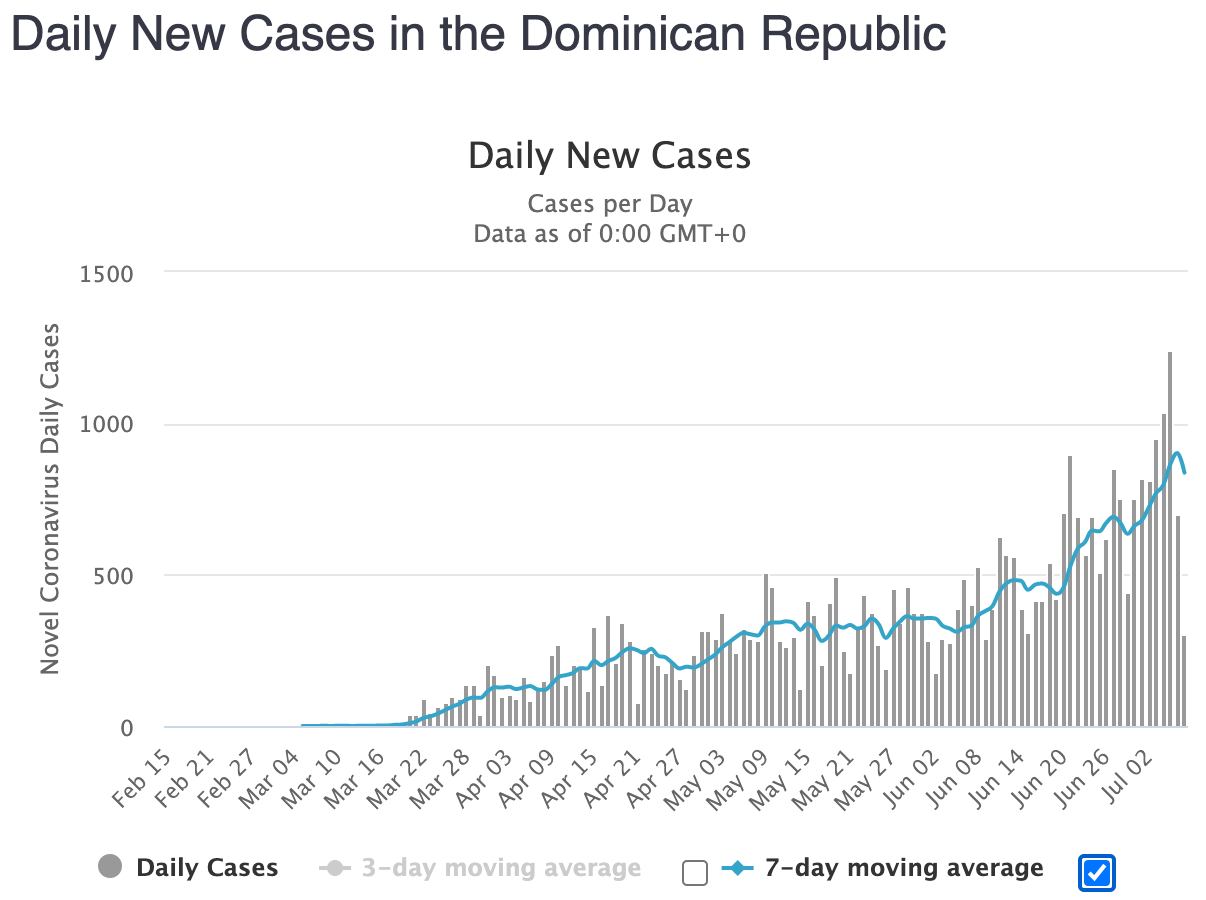
What Next for the DR?
Abinader, who himself tested positive for Covid-19 last month, must immediately take action to limit the spread of the virus, which will only decimate the economy further and lead to more deaths the longer the pandemic persists. The World Bank has already loaned the DR $250 million (£200 million) to combat the immediate shortage in resources, and more will likely follow as a deep recession is set to hit countries across the globe. The DR has enjoyed constant growth for more than a decade and a half, with only a small -0.3 percent contraction during the height of the Great Recession in 2009. But the difference between then and now are the travel restrictions in place preventing tourists from fuelling its economy, which generated a record $7.7 billion (£6 billion) in 2019. With more second waves of Covid cases around the world, it could potentially be years before the DR returns to pre-pandemic levels.
Dominican Republic GDP Per Capita Growth % | Source: World Bank
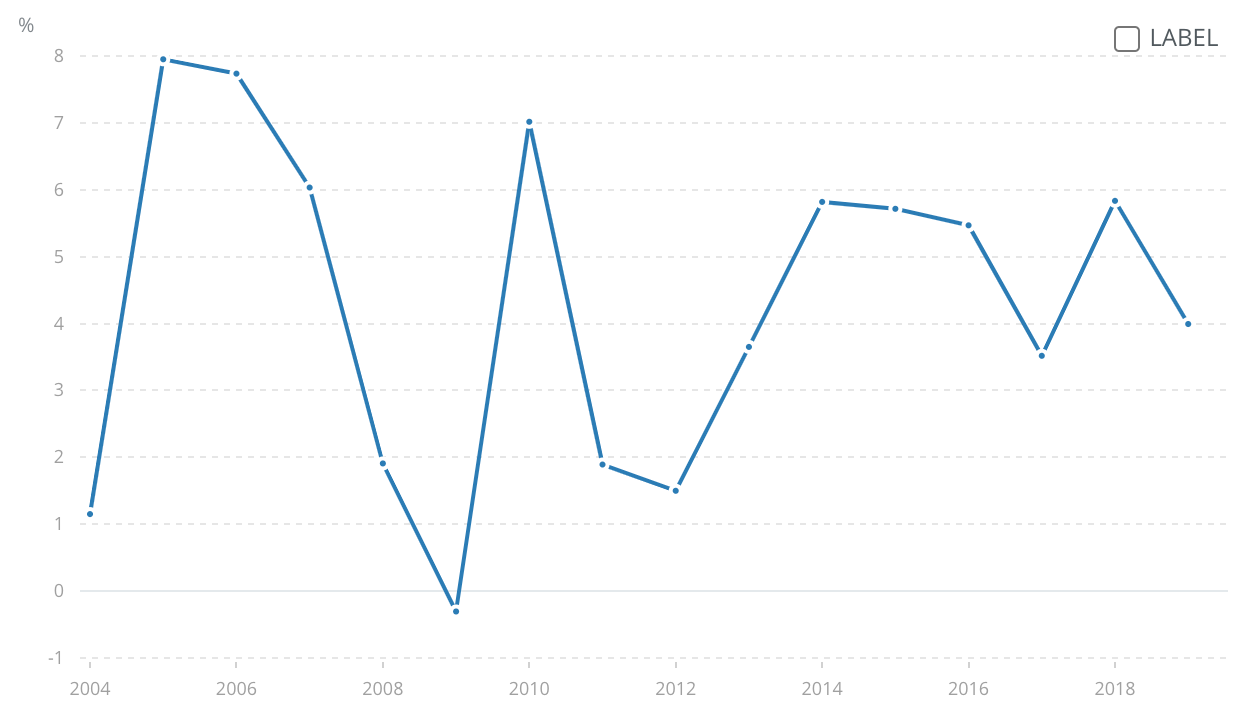
Love Thy Neighbour
Looking to the future, Abinader must also resolve his nation’s bitter conflict with Haiti, of which it inhabits the same island with. The tension between the two countries dates back to 1697 when the Treaty of Ryswick divided the island of Hispaniola — “founded” by Christopher Columbus in 1492 — between France (modern day Haiti) and Spain (modern day Dominican Republic). Oh yeah, you know what’s coming, time for a history lesson… In 1822, Haitian President Jean-Pierre Boyer marched his troops into the DR (then called Santo Domingo) and annexed that part of the island, until 1844 when Boyer was overthrown and Santo Domingo declared its independence, thus formally becoming the Dominican Republic. Then in 1930, General Rafael Trujillo took over the DR and began a 31-year dictatorship until his assassination. Most infamously, Trujillo ordered the murders of 20,000 Haitians living in the DR in 1937, commonly known as the Parsley Massacre.
Since then, tensions between the two nations have been mixed. When Haiti suffered a devastating magnitude 7 earthquake in 2010 that killed around 300,000 people and displaced 1.5 million, the DR was one of the first countries to respond with help and aid. But just three years later, the DR’s highest court ruled to revoke the citizenship of children of illegal Haitian migrant workers. Erasing history is impossible. Building bridges and ties for the future isn’t going to be easy, but moving forward together politically and economically will go along way to easing painful memories for all involved.
